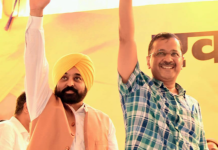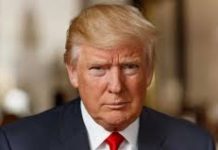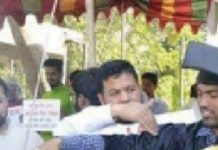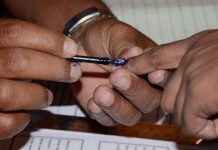
Jyoti Krishan Dutt, the Director General of the National Security Guards (NSG), had three months left for retirement. Till 26/11 — that apocalyptic night when he set off for Mumbai with his commandos — he was better known as the CBI officer who had been in charge of the infamous Purulia arms drop case.
The terror attacks in Mumbai changed everything. The three-day-long operation at the Taj, the Oberoi and the Nariman House, made Dutt a national hero. He now proudly displays paintings gifted to him by Anjoli Ela Menon and Jatin Das. Dutt, in fact, has painted one himself. He now lives a retired life with his wife and two children in Delhi, but remembers each moment of the operation, right from seeing visuals of the terror attack on his television screen at home. His thoughts went something like this — this is not a gang war; the same set of persons are roaming the streets of Mumbai; underworld dons don’t linger and they seldom carry automatic weapons.
A proactive Dutt told his officers to get ready even before the official request from the Cabinet Secretary at 00.50 am on November 27, 2008. While on his way to Delhi airport, he got a call from the then Home Minister Shivraj Patil’s residence. Both he and Patil then flew to Mumbai. In a two-hour interview to TEHELKA, Dutt discusses the NSG’s operations and reveals how little he had to proceed on, the television being his main source of information.
You apparently started making preparations for Mumbai even before you got a formal request. Did you know that the operation was of such scale and magnitude that the NSG would need to be brought in?
You see, I was watching TV that night. The visuals of the terrorists and some of the scenes of the havoc made it clear that it was not a gang war. In a gang war, indiscriminate firing does not continue over a long period of time. Different places are not attacked. Gang wars are basically hit-and-run operations but in this case, I could see that the same set of people were moving around and firing. And then I came to know that the head of the ATS had been shot. I knew then that the NSG would be called. So even before I got an official call, I asked my officers to be on alert – get ready, pack ammunition and equipment and be set to move. When the call saying the NSG may be required came, my second move was to tell them to move to the airport.
How did you know how many commandos to take? I don’t think you were given a specified number.
We knew from TV visuals that the locations were the Taj, the Oberoi and Nariman House and that the terrorists had moved out of Leopold Café and the railway terminus. It was clear that they would take shelter in these three locations and hold hostages. So we mobilised the number of commandos we thought were necessary. On reaching Mumbai, I realised that that number was not enough. Only after we reached Mumbai did we realise that it was not just the Taj, the Oberoi and Nariman House. It was the Oberoi, the Trident, the Taj Heritage and the Taj Towers. Nariman House, too, is located in a built-up area, surrounded by buildings from all sides. You have to make sure that no other person gets hurt or killed in crossfire. I realised we needed more commandos. The second lot arrived on November 27, 2008 at 1.35pm.
What time did you get the formal request?
The formal request reached me at around 0050 hrs.
Was it from the Home Secretary?
No, the Home Secretary was out of country. I received official word from the Cabinet Secretary. And 10-15 minutes before that, I had also got in touch with AN Roy, Director General of Police, Maharashtra. I asked him what exactly was happening and if he would need the NSG. That’s when he confirmed what I had seen on TV – that terrorists had taken up positions in three places. It was only after reaching Mumbai that I realised that we were actually looking at five buildings, not three.
So you’re saying that you didn’t really get too much information from the Mumbai end.
Yes, not immediately.
And you had to make an assessment from what you saw on TV?
Yes, initially the NSG got more information from television than from the Mumbai Police.
Isn’t that a sad reflection of our internal security apparatus and our preparedness?
Post-operation, a lot of things have been drawn up and brought into focus but yes, there are certain drawbacks.
In the absence of any concrete information, what kind of briefing did you give your officers?
My briefing to my commandos was, again, based on what I had seen on TV. I told them I did not want any innocent lives to be lost — the innocent lives of hotel guests, those who had been visiting the hotel, the hotel staff and anyone else in the vicinity. The second instruction I gave was that as far as possible, we should try to catch the terrorists alive. My experience of being with the CBI had taught me that if you kill a terrorist, you also lose a lot of information. The third point was that we should cause as little collateral damage as possible.
Did you have an idea about the kind of arms and ammunitions the terrorists had?
We did get some feedback on this once we reached Mumbai. In fact, we could also tell from the scenes on TV that they had automatic weapons.
Did you know their numbers? Did the Mumbai Police tell you how many terrorists had entered each location?
No. I didn’t know the precise numbers. In fact, at that time, what was being said over the TV was that these terrorists have come via the sea route. The second pointer was that such terrorist activity is not possible without local support. The third was the fear that the terrorists might have checked into the hotels as guests and might have stocked up on ammunition and explosives. So there were a lot of theories floating around and no real way to verify them. Even the state authorities didn’t have much data. As for the number of terrorists, they told us that they had spread out to different locations, but that there could be one or five or 10 or 15 or even 20 terrorists at the Taj.
This is what you got from the Mumbai police?
Yes, the Mumbai police. The same thing was mentioned about the Oberoi. That the number could be between 4 and 6. In Nariman House, too, they said there could be up to six terrorists.
This was on November 27, one day after the attacks?
Yes, this was on the 27th, the day we landed.

Was this the first briefing you got from them?
Yes, on the number of terrorists. There was nothing definite on anything else. As a result, we made our own assessment based on the intensity of the firing we saw. We arrived at our own figures after that. On the third day of operations, we were told by the Intelligence Bureau (IB) to account for 10 AK-47s, which also meant 10 terrorists. Out of the 10, Kasab was already in custody, and one had been killed. We needed another eight AK-47s. At Oberoi, we got two and two more at Nariman. On the 29th morning, one terrorist fell out of the window. And the bodies of two terrorists were found near the spiral staircase and the Harbour Bar at the Taj. So now, we had nine weapons. That is when I spoke to the Director of the IB in Delhi to ask if he could confirm how many terrorists there were. He said 10, but we had only nine AK-47s. So even after the shooting in the Taj stopped, I had to tell my men to be cautious during what we call the ‘render safe procedure’, when we trace any unexploded material lying around. We had to check every room, and make sure that a terrorist was not holed up somewhere. If this is not done thoroughly, a terrorist we don’t spot can just come out and start shooting — the whole thing starts again. We could lose the entire game. I told my men to tell the hotel guests and local police that one more terrorist needs to be found. Ninety minutes later, when we were taking our NSG dog around to sniff out explosives, we detected the tenth gunner — lying covered under a lot of burnt material, soot and carbon.
So the IB’s information was accurate?
Yes, they were absolutely accurate about the 10 terrorists. The Mumbai Police did not know and the journalists outside Taj kept saying there was only one terrorist in the Taj. My assessment was that there were between three and five there.
And there were four
Yes.
Since Kasab had been caught on day one, why did the Mumbai Police not know how many others were there?
I don’t exactly recall the details. I don’t know if Kasab disclosed the number or whether only those who had come through the boats were there or if some locals had also joined them. All kinds of information was floating around. I had no intention of coming before the media but there was no one else to brief them and I knew the entire world was watching. I thought it would be better to brief them rather than allow various speculations.
Given the fact that you got a very skeletal briefing, how did you go about the operation? I believe the DGP was serving biscuits in Raj Bhawan when you arrived there with Shivraj Patil, the then home minister?
I don’t remember biscuits but we did have a cup of tea. As for the operation, we were moving on to tactics and strategies. Each special force has their own strategies and none will talk about them. But they need enough factual input — Are there three miscreants or 10? Where are the entry and exit points? Where are the vantage points to shoot from? The terrorists can also try to take hostages and act in a particular way. How do we guard the area? How do we crush them? How do we neutralize them? Sometimes, even a hint of the miscreant’s act is enough to assess what needs to be done. Other times, we have to evoke a response.
I don’t mean to compromise tactical procedures, but you went into an operation not knowing that there is an Oberoi and there is an Oberoi Trident. I believe you had no maps either.
We got something about the Taj and Nariman but that was much later.
So you went into the Taj without maps?
That was the first thing we asked for. We also asked for the layout of the hotel. See, when you go to the cinema hall, you see an outline map. The same map was found for the Taj, with little squares showing the rooms. But how many exits and entries were there? How many service lanes and passages? How many corridors? Those are very relevant but were not shown. The terrorists in the Taj knew the place inside out. They never entered a place with only one entry and exit point because they would have been trapped. They were always moving in areas with lots of passages. They were familiar with the layout and knew exactly where to go and where not to go.
Are you saying they had done a good recce?
Whether they did a recce, whether they visited the place before, whether the whole place was explained to them, whether they were shown a 3D film, they did not get into a room where there was no separate exit. I would even go to the extent of saying that except for one particular room where they did enter and kill the occupant, I don’t think they went into any room with a single door and shot anyone inside. Unless they were chasing someone like they did in the Chambers – they chased a few guys into the kitchen and shot them there. Even the kitchen has a lot of passages and entry points.
According to CCTV footage, the terrorists spent close to three hours in one room and there was a Mumbai Police DCP present there, monitoring the footage. Did the Mumbai Police lose an opportunity to contain the terrorists and mount an operation even before the NSG arrived?
The first question is: Did they have the resources to mount an operation of that scale? Secondly: All right, they have seen some terrorists entering a room, but could they rule out the possibility of more terrorists in another room? These strategies require planning.
Hasan Gafoor, the Mumbai police commissioner has said on record that DCP Nangre Patil wanted to launch an operation but he told the DCP not to take any risks and that the NSG was on its way. I repeat the question. Could the terrorists have been contained on that floor at least?
Well, a lot of debriefings have taken place. All I can say is that the entry and exit points on that floor could have been secured. If the NSG had been informed that the terrorists were in a particular room, I’m sure we could have immediately devised a plan to limit them to that floor, even if we did not have the resources to mount an assault.

Were you fearful that the NSG would suffer casualties, since you went in practically blind?
See, we do mock exercises in training. Earlier, when I joined the NSG, these exercises were done very close to the training schools. They needed to be done in all sorts of terrains and so we sent our men to places like the Shivalik range, and the forest areas in Dehradun. They also do exercises in places with a combination of land and air. Now, when an attack happens in Mumbai, the same kind of tactics are involved. Some stock tactical responses are already prepared in training. In fact, in February 2008, during the SAARC meeting, we went to Vigyan Bhawan and another five star hotel. I wanted our men to know what a five star hotel looks like from the inside. We spoke to the hotel management and let some of the commanders go inside in civilian clothes to have a look. I said: Show them how the kitchen is. See how they have service lanes; how there are toilets and suites. We looked at a small room, fire exits, passages, conference rooms, service lifts and lifts for the guests.
Why did this idea occur to you? Because all the VIPs stay in these hotels?
It’s not a question of VIPs, it’s a matter of security. We wanted to cover different areas that may become targets. Hotels are one such place. When there is hard rooftop combat, we know all about it. But apart from that, they must also know how to tackle situations in the interiors.
So when you reached the Taj how did you know if your strategy should be to go top-down or bottom-up? You had no knowledge of whether they were on the third floor or on the ground floor or in the kitchen.
I cannot reveal strategic details. To put it simply – if you have a four storey building and you’re playing a game with your friends, like chor sipahi, when you cover each floor, you will be cautious, except that in these cases we also go on positioning our men to see that nobody gets taken by surprise by the enemy. We had to guard ourselves from that.
What was the most critical moment for you during the operation?
There were two or three moments. The first one was when I lost Major Sandeep Unnikrishnan at the Taj. In an operation like this, everyone feels that nothing will happen to him. But when the first casualty takes place, a feeling spreads that anything can happen to anyone.
When I was informed that Major Unnikrishnan had lost his life, I wanted to visit the spot where the encounter had taken place and see how he lost his life. I wanted to know if there was any defect in the positioning or in my tactics. Was there something more I could have done in my strategy? If there was a defect, more commandos could get hurt. I did not want to lose more of my men, I wasn’t prepared for that.
We went to the first floor, where there is a landing. From the staircase you can go to the left and to the right. My officers explained that the terrorists had thrown a grenade and that one of our men had gotten injured. When the shooting was going on, the team came back and saw this injured person near the staircase. So Unnikrishnan again got his team to move left. He led his team to rescue the injured comrade and picked him up. While he was being rescued and taken down, there was some more firing from the terrorists. Unnikrishnan decided to go after them. He went up the landing and turned right. If he had gone left, he would have faced only one terrorist. He went to the right. So the result was that there was one terrorist there and one at the back. He got caught in crossfire, but still told his men not to come up because they might get caught in the process. So when he reached over there, he started shooting and managed to make the person in the eastern corner duck. At that time, the person at the back started firing at him and made as if he was trying to run to the corridor. Unnikrishnan thought he is trying to escape and went after him. In the middle of all this, a door opened and another terrorist came out. This third terrorist shot him.
There was nothing wrong with the tactics. This was an officer acting on the call of duty. He saw a window of opportunity. If he had succeeded, we would probably have wound up the operation much faster. As it is, we did come to know that there were three or four terrorists at least. I had to tell my officers that the tactics are absolutely correct; stick to them and carry on. This message had to go out. The men had to know that they were on the right path, that the life of this officer must not go to waste, that we have to get the terrorists now.
Is it correct that the Mumbai Police have commandos who have been trained by the NSG?
We keep training officers from different states. Off hand, I cannot tell you when or how many men we trained but yes, they were trained.
You mentioned that your attempt was to try and get the terrorists alive. Did you come close to it? Was it possible?
It was possible at one or two places, especially at the Taj, when we thought that we had managed to corner the men in a particular area. We told them that it would not be possible for them to escape and that if they surrendered, they would be treated as per the law. But their reply was just a string of abuses and the hurling of a lot of grenades. We didn’t need any other reply to tell us what we had to do.

So, they were on a suicide mission.
Yes. But at the same time, my mind goes to the intercepts.
They tried to negotiate?
No, according to the intercepts, their handlers told them that there are a few MPs and some very senior bureaucrats staying at the Taj. The terrorists were told that they could take any of the VIPs hostage and make demands. That does not indicate a suicide mission. If they had managed to take one of those people hostage, I wonder what they would have asked for in return.
So how did you manage to secure the hostages?
This is why we were constantly trying to keep the hotel guests away from the terrorists. We didn’t want them to get an opportunity to enter the hotel rooms. Which is why it was very disturbing when it was mentioned on a news channel that the family of a person was in such-and-such room. What is this madness? It’s like telling the terrorists to go to that room and find hostages.
What are the critical lessons that you have learnt? Which areas need improvement?
There are lessons to be learnt for the state police and for the state authorities. There are weaknesses and drawbacks but those are not things I should reveal.

Is there anything you can share without compromising future operations?
I would only suggest one thing. There is a lot of expansion happening in the NSG divisions. Regional centres are being set up. We require trained manpower. We also require lots of equipment, not only to improve our existing forces but also to equip the forces that are being set up in various states.
We need to have procedures where we can get things get done within a month or two. This is a special force that should not have to wait for equipment. Things are changing and developing so fast; if we want something now and we get it after one year, the product itself will have undergone a change.
Which is the one product that you missed in the Mumbai operations?
These are things that you could also find on the Internet — like audio or video equipment — which are very useful. Equipment that tells you about the presence of men inside a room. There is equipment that can give you a picture of the inside of a room. If one has something like that, we can know the positions of the terrorists.
Did the process of requisitioning the IL-76 aircraft lead to any delay?
It depends on your perspective. From the NSG perspective, we were on alert even before the official request. First, I was told that the plane would have to come from Chandigarh. I called the Air Chief and he gave me the name and number of an officer to contact. Meanwhile, fortunately, I received a call from the Director of the Aviation Research Centre (RAW’s aviation wing) and he said they had a plane available in Delhi. Until 26/11, the NSG DG could requisition a plane only in the event of a hijacking but some of these procedures have since been amended.
If you were to mention one thing that the Mumbai police ought to have told you on your arrival, what would that be?
If they had told us the number of terrorists present at each location, that would have helped.
WRITER’S EMAIL
shammy@tehelka.com












